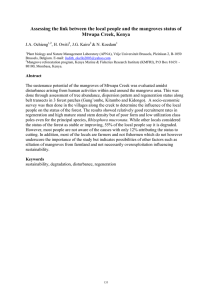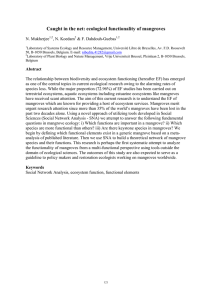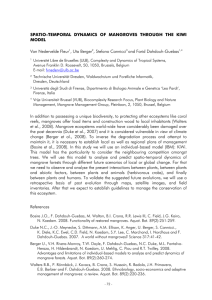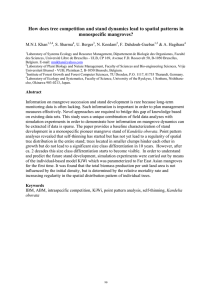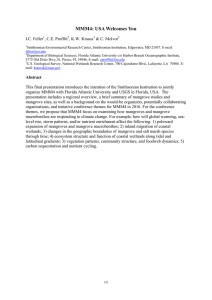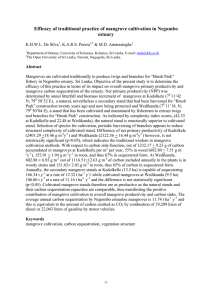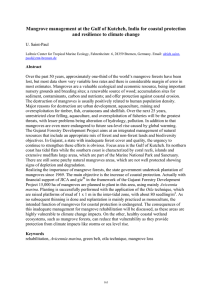Vulnerability of mangroves in the WIO region to climate change
advertisement
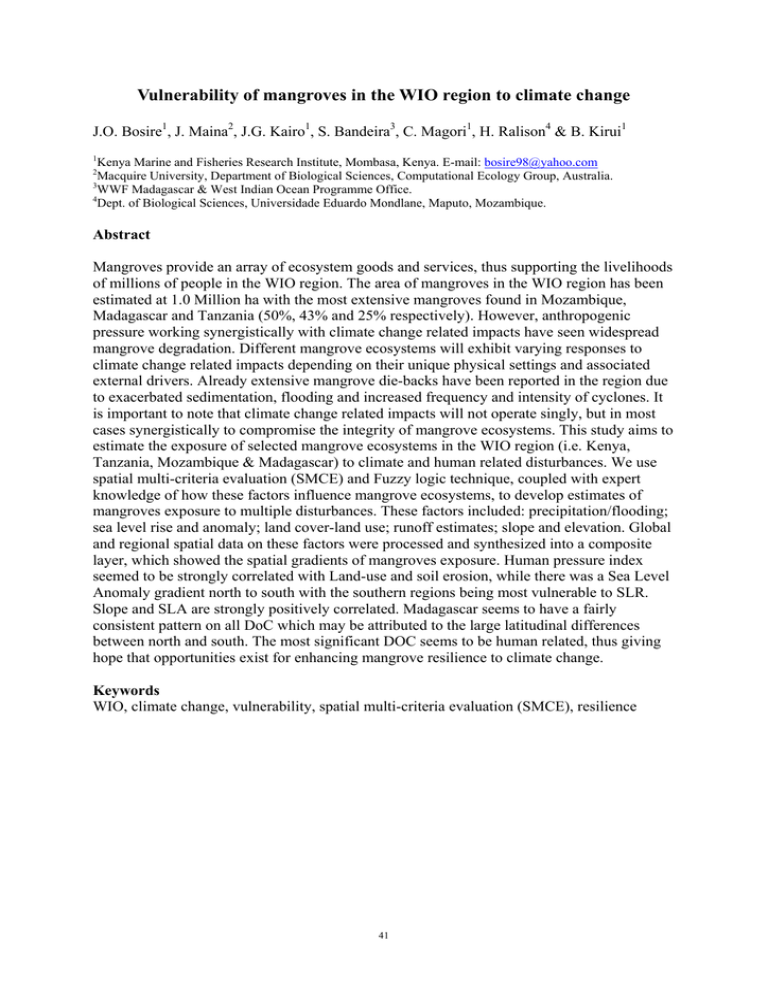
Vulnerability of mangroves in the WIO region to climate change J.O. Bosire1, J. Maina2, J.G. Kairo1, S. Bandeira3, C. Magori1, H. Ralison4 & B. Kirui1 1 Kenya Marine and Fisheries Research Institute, Mombasa, Kenya. E-mail: bosire98@yahoo.com Macquire University, Department of Biological Sciences, Computational Ecology Group, Australia. 3 WWF Madagascar & West Indian Ocean Programme Office. 4 Dept. of Biological Sciences, Universidade Eduardo Mondlane, Maputo, Mozambique. 2 Abstract Mangroves provide an array of ecosystem goods and services, thus supporting the livelihoods of millions of people in the WIO region. The area of mangroves in the WIO region has been estimated at 1.0 Million ha with the most extensive mangroves found in Mozambique, Madagascar and Tanzania (50%, 43% and 25% respectively). However, anthropogenic pressure working synergistically with climate change related impacts have seen widespread mangrove degradation. Different mangrove ecosystems will exhibit varying responses to climate change related impacts depending on their unique physical settings and associated external drivers. Already extensive mangrove die-backs have been reported in the region due to exacerbated sedimentation, flooding and increased frequency and intensity of cyclones. It is important to note that climate change related impacts will not operate singly, but in most cases synergistically to compromise the integrity of mangrove ecosystems. This study aims to estimate the exposure of selected mangrove ecosystems in the WIO region (i.e. Kenya, Tanzania, Mozambique & Madagascar) to climate and human related disturbances. We use spatial multi-criteria evaluation (SMCE) and Fuzzy logic technique, coupled with expert knowledge of how these factors influence mangrove ecosystems, to develop estimates of mangroves exposure to multiple disturbances. These factors included: precipitation/flooding; sea level rise and anomaly; land cover-land use; runoff estimates; slope and elevation. Global and regional spatial data on these factors were processed and synthesized into a composite layer, which showed the spatial gradients of mangroves exposure. Human pressure index seemed to be strongly correlated with Land-use and soil erosion, while there was a Sea Level Anomaly gradient north to south with the southern regions being most vulnerable to SLR. Slope and SLA are strongly positively correlated. Madagascar seems to have a fairly consistent pattern on all DoC which may be attributed to the large latitudinal differences between north and south. The most significant DOC seems to be human related, thus giving hope that opportunities exist for enhancing mangrove resilience to climate change. Keywords WIO, climate change, vulnerability, spatial multi-criteria evaluation (SMCE), resilience 41
